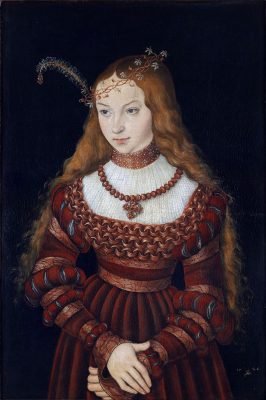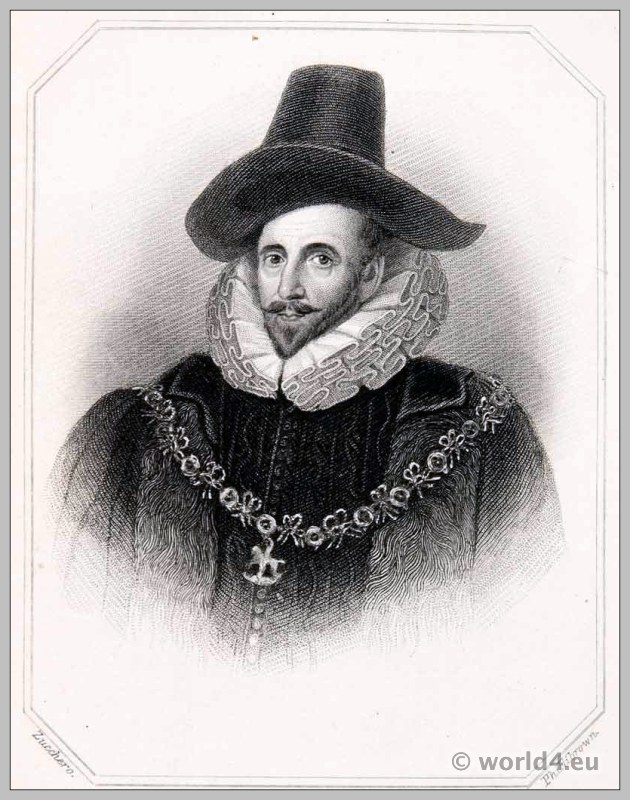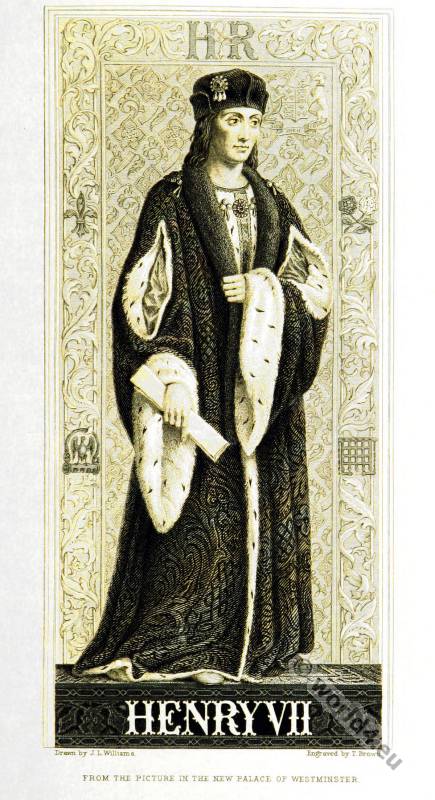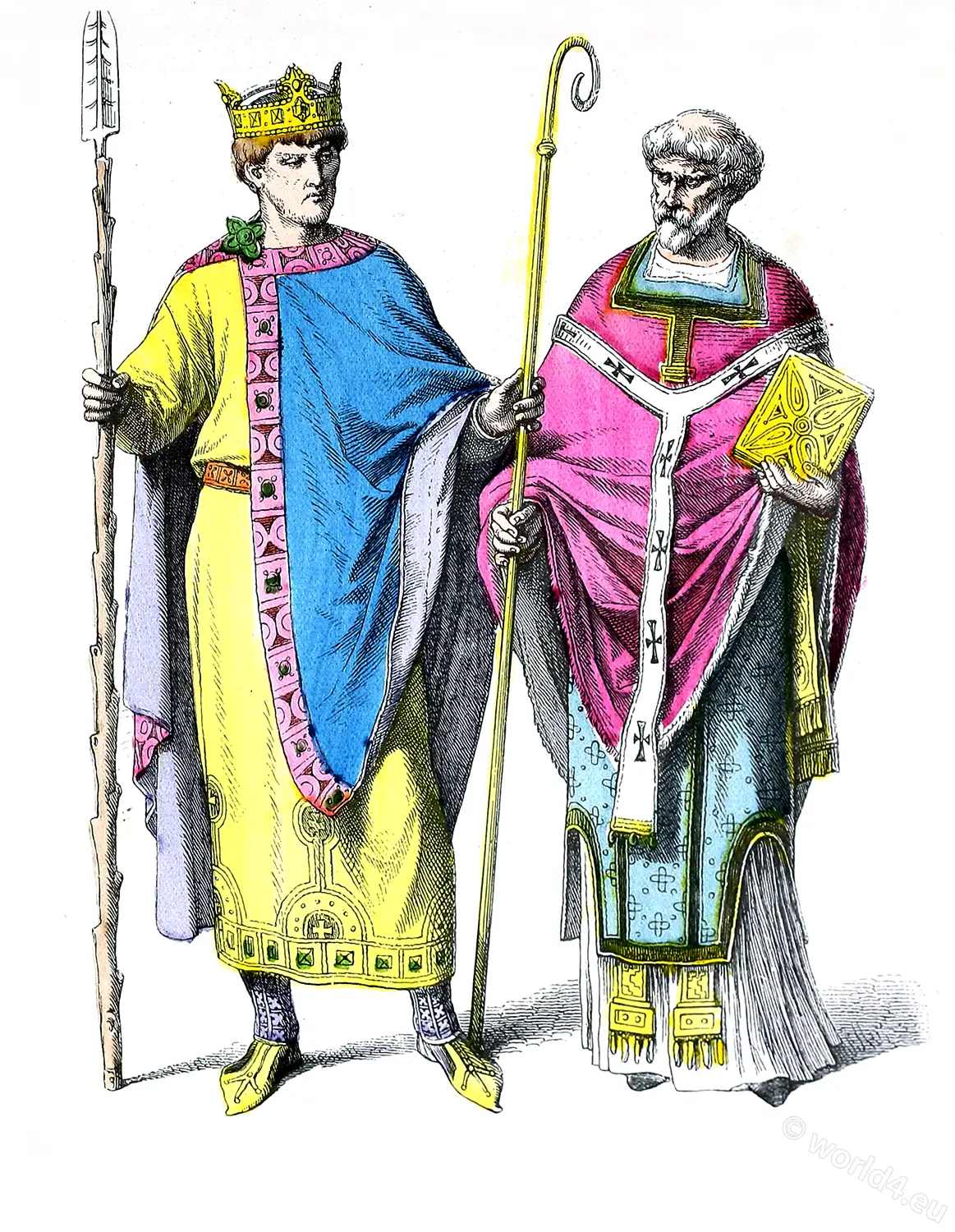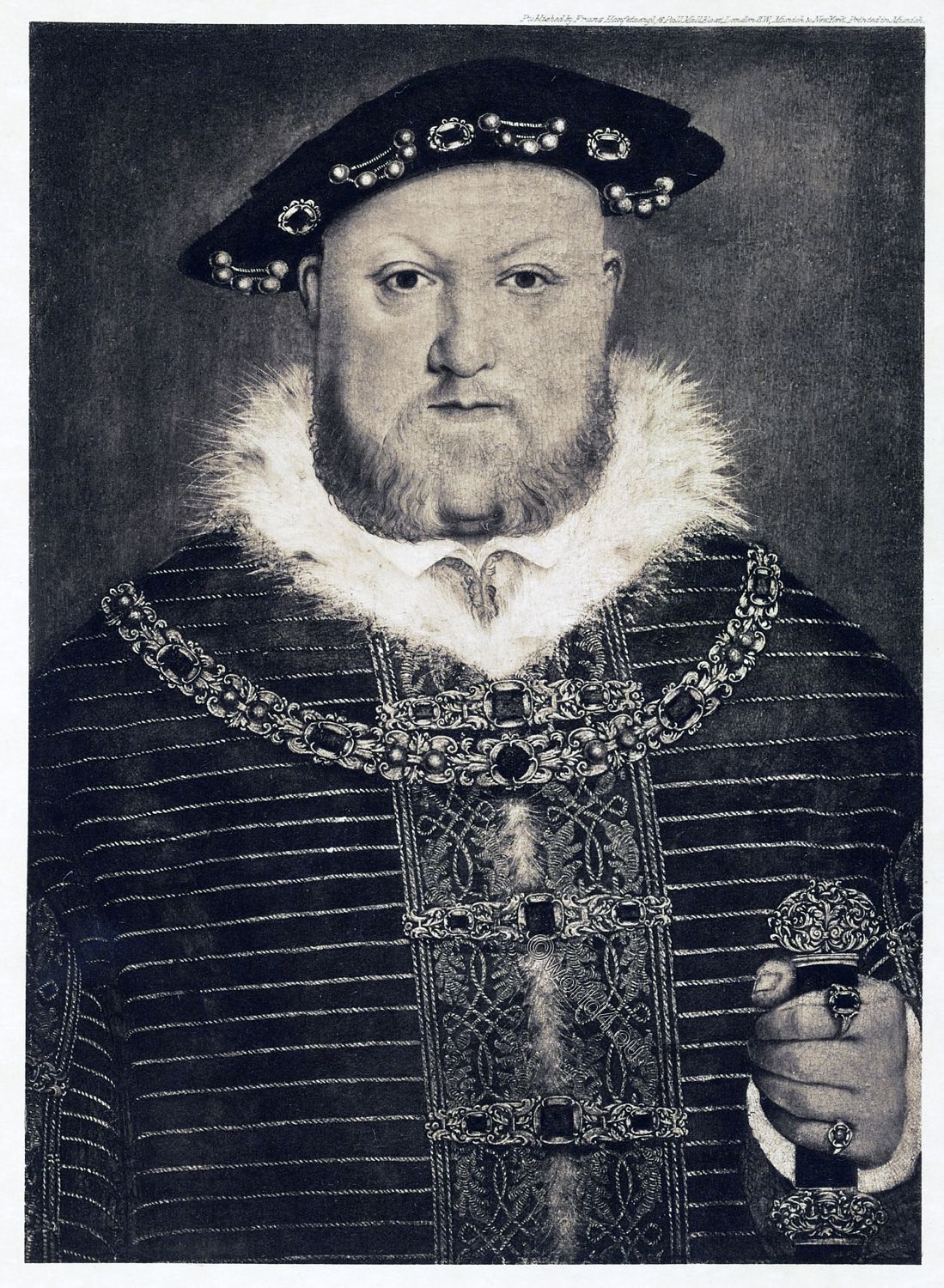Anne of Cleves (1515 – 1557) was the fourth wife of the English King Henry VIII and was therefore Queen of England from 6 January 1540 to 9 July 1540.
THE marriage of Henry the Eighth with Anne of Cleves may he considered merely as a political measure. Alarmed at the ambitious views of Charles the Fifth, and especially at some private negotiations of which he had gained information between that prince and Francis the First, which materially concerned his interest, it occurred to him that he could not more effectually guard himself against the Emperor than he cultivating the friendship of the princes of Germany.
Sibylle (1512–1554), the eldest daughter of John Duke of Cleve, was already married to the Duke of Saxony (John Frederick I, Elector of Saxony 1503 – 1554); and Henry in giving his hand to the younger, meditated to secure the interest of those two powerful princes, and to pave the way for new alliances with others, Cromwell, too, then in the zenith of his favour, strongly promoted the match; is said to have recommended the lady in terms better suited to his master’s humour than to her merits; and to have paid for the deceit with his life.
In the winter of 1539 she arrived, royally attended by an English fleet of fifty sail. The King saw her privately at Rochester, and conceived an unconquerable distaste to her. He instantly determined to break off the match, if possible; and, having heard of a sort of precontract between the lady and Francis, son of the Duke of Lorraine, affected to consider it as a legal bar to the proposed nuptials, complained heavily of it to the minister of the Duke her father, and referred it to the consideration of the privy council.
These attempts proved vain: the Duke of Cleve immediately offered to procure a renunciation of the contract; and the council, contrary to its usual complaisance in Henry’s causes, determined that such renunciation would amount to an absolute release. Henry, therefore, having now no excuse left, was most unwillingly married at Greenwich on the sixth of July, 1540.
After tho celebration of the nuptials his dislike increased every hour: even the next morning he expressed it most strongly to the unlucky Cromwell. He continued, however, to live with the Queen on decent terms, till the arrival of the promised instrument for annulling the contract with the Prince of Lorraine, which was immediately submitted to the council, now prepared and resolved to object to it.
The two houses of parliament, similarly disposed, besought the King to allow that the validity of his marriage might he tried; which heing granted, a committee was appointed to examine evidence. The result of the inquiry was, that the precontract with the Prince of Lorraine still admitted of doubt; that the King had married against his will; and that the marriage had not been consummated; and upon these grounds the convocation unanimously declared it dissolved.
The next day Henry sent to request the Queen’s consent to the separation; to offer her an annuity of three thousand pounds, and to declare her by letters patent his adopted sister; and to signify his consent that she might live in England if it should be her choice: to all which she agreed without hesitation, or any sign of resentment; and this, perhaps, is the best proof we have from history of the meanness and insignificancy of her character. Anne of Cleves immediately withdrew herself into privacy, and remained, almost forgotten, at her house at Chelsea, till her death on the sixteenth of July, 1557.
This drawing of Anne of Cleves was bought at Dr. Mead’s sale in 1755, by Walter Chetwynd, fellow of King’s College, Cambridge. and was delivered by the executors of that gentleman to Benjamin Way, Esquire, of Denham in Bucks, who lately had the honour of receiving his Majesty’s permission to add it to the Royal Collection.
Source: Portraits of illustrious personages of the court of Henry VIII: engraved in imitation of the original drawings of Hans Holbein, in the collection of His Majesty by Edmund Lodge; F.S.A John Chamberlaine. London: Printed by W. Bulmer and Co. 1828.
[wpucv_list id=”136569″ title=”Classic grid with thumbs 4″]Related
Discover more from World4 Costume Culture History
Subscribe to get the latest posts sent to your email.


